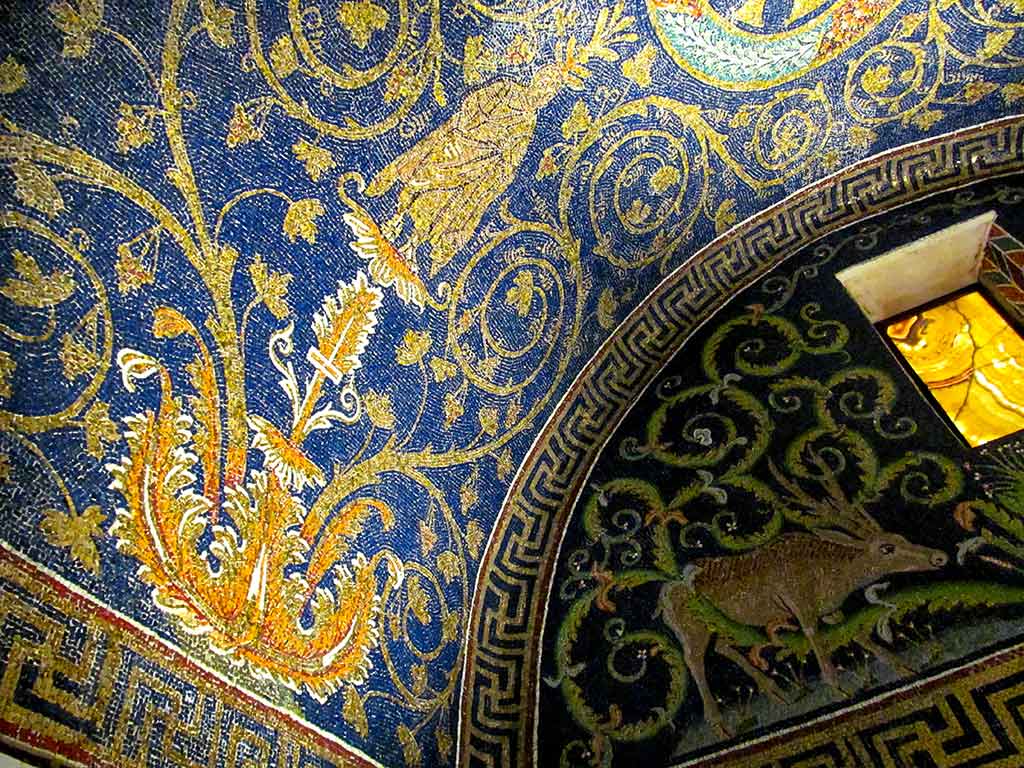
Ravenna is renowned worldwide for being the city of mosaics, even if the Office of Tourism told me that this art was not born here but has been imported by the Byzantines.
Surely one of the most fascinating shows that I saw during my trip to Emilia Romagna is the mosaic decoration of the mausoleum of Galla Placidia, which from the outside looks like a simple church that does not really have anything to offer to visitors. The Mausoleum of Galla Placidia is one of the eight structures in Ravenna inscribed on the World Heritage List in 1996. As it was built in 425-430, it’s the earliest mosaic monument.
Just a few hours it will take you to visit the Mausoleum, which is close to the Basilica of San Vitale: they stand side by side in the center of the city.
San Vitale is absolutely one of the most famous churches in Ravenna, a true masterpiece of Byzantine art and rich mosaic of those that make the city famous worldwide. Basilica and mausoleum are almost in the same area, side by side, and it is therefore logical to visit both on the same day, at least to admire the beauty of the mosaics.
The most famous ones in the Basilica are next to the altar and dedicated to Emperor Justinian and Theodora, while a truly incredible spectacle of decorations is awaiting you in the Mausoleum.
Its cupola is completely covered with mosaics, representing 8 apostles. Over the door, you can see Jesus as the Good Shepherd, young, beardless, with flowing hair, surrounded by sheep. Inside, there are 3 sarcophagi, the largest falsely believed to house the mortal remains of Galla Placidia, the daughter of Emperor Theodosius, her brother, Emperor Honorius, who had moved the capital of the Western Empire from Milan to Ravenna, and her husband, Emperor Constantius III. In fact this building was the oratory of a wider church the Holy Cross.
The climate is very pleasant to go to Ravenna for, for example, a weekend out of town: near Ravenna in fact there are theme parks, nature reserves and the always crowded Adriatic Coast.